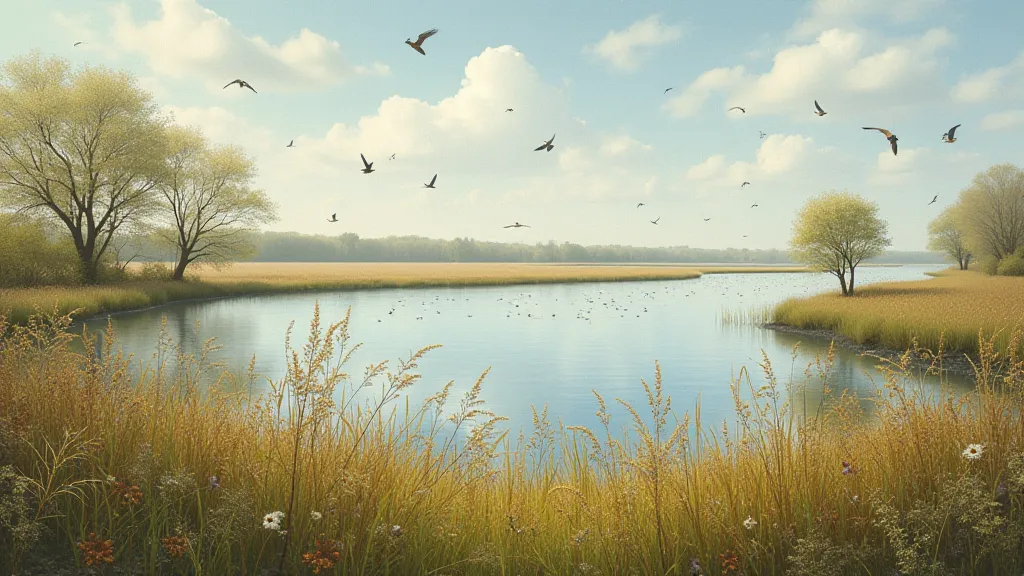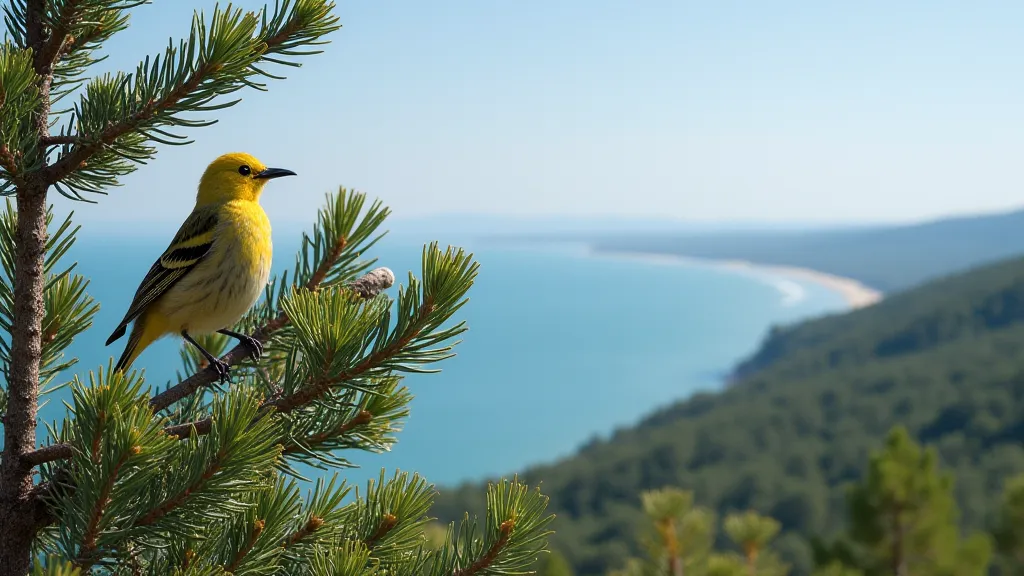Birdwatching in the Great Lakes Region
Discover the diverse birdlife thriving along the shores and inland forests of the Great Lakes.
The Great Lakes region – encompassing Michigan, Wisconsin, Illinois, Indiana, Ohio, Pennsylvania, New York, and surrounding areas – is a birdwatcher's paradise. The unique combination of freshwater habitats, extensive forests, and migratory routes creates a rich tapestry of birdlife, from vibrant warblers to majestic raptors. This guide provides a glimpse into what you can expect when birdwatching in this remarkable area.
Understanding the Great Lakes Landscape and Birdlife
The Great Lakes themselves offer essential habitat for waterfowl and shorebirds. The surrounding wetlands and marshes provide nesting and feeding grounds. Inland, you'll find a mix of deciduous and coniferous forests, grasslands, and agricultural areas, each supporting distinct bird communities. The region's position as a key migratory corridor means you can expect an impressive variety of species throughout the year.
Seasonal Highlights:
- Spring (April-May): Witness the spectacular arrival of migratory songbirds, including warblers, vireos, and thrushes.
- Summer (June-August): Nesting season! Look for ground-nesting birds like American Woodcocks and listen for the songs of many species.
- Fall (September-October): Observe raptor migrations – Broad-winged Hawks are especially abundant. Waterfowl begin their southward journey.
- Winter (November-March): While birdlife can be less abundant, look for wintering waterfowl, owls, and other hardy species.
Prime Birding Spots in the Great Lakes Region
Here are a few recommended locations to start your birdwatching adventure:
1. Point Pelee National Park, Ontario (Near Detroit, Michigan)
Located at the southernmost point of mainland Canada, Point Pelee is a renowned birding hotspot. Its unique location creates a “trap” for migrating birds, resulting in extraordinary concentrations during spring and fall. Expect to see a wide variety of warblers, vireos, and other songbirds. This is a must-visit location for experienced and beginner birders alike.

2. Horicon Marsh, Wisconsin
This vast wetland is a critical stopover for migrating waterfowl and shorebirds. In the spring and fall, the sheer numbers of birds are astonishing. Year-round, you can find a variety of wading birds and raptors. The marsh is easily accessible with numerous viewing platforms and trails.
3. Sleeping Bear Dunes National Lakeshore, Michigan
This stunning landscape along Lake Michigan offers a diverse range of habitats, from sandy dunes to forested areas. Look for Kirtland's Warbler (a species that breeds exclusively in young jack pine forests – a conservation success story!), as well as a variety of other woodland birds. The coastal areas provide excellent opportunities for observing waterfowl and shorebirds.

4. Magee Marsh Wildlife Area, Ohio
Located along Lake Erie, Magee Marsh is another excellent migratory birding location, particularly renowned for its spring warbler concentration. The boardwalk trails make it accessible and offer excellent viewing opportunities. The marsh provides vital habitat for numerous species.

Bird Identification Tips for Beginners
Getting started with bird identification can seem daunting, but with a little practice, it becomes much easier. Here are a few key tips:
- Focus on Size and Shape: Note the bird's overall size relative to other familiar birds.
- Observe Plumage: Pay attention to the colors and patterns of the bird's feathers.
- Listen to Songs and Calls: Bird vocalizations are often distinctive and can aid in identification.
- Note Habitat: The type of environment the bird is found in can provide clues.
- Use a Field Guide: A good field guide is an essential tool for bird identification.
Essential Gear for Birdwatching
- Binoculars: Essential for getting a closer look at birds.
- Field Guide: Helps with identification.
- Notebook and Pencil: For recording observations.
- Comfortable Shoes: You'll be doing a lot of walking.
- Appropriate Clothing: Dress for the weather.
The Great Lakes region offers an abundance of birdwatching opportunities for all skill levels. By exploring these prime locations and using the tips provided, you’re sure to enjoy the beauty and wonder of the region’s avian life.





